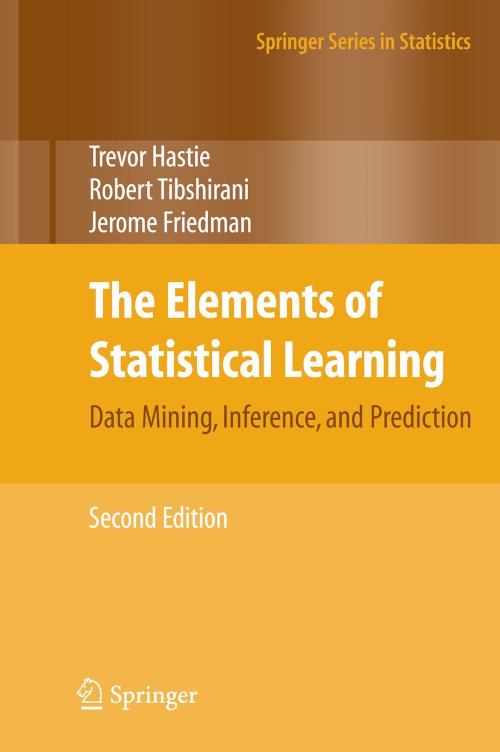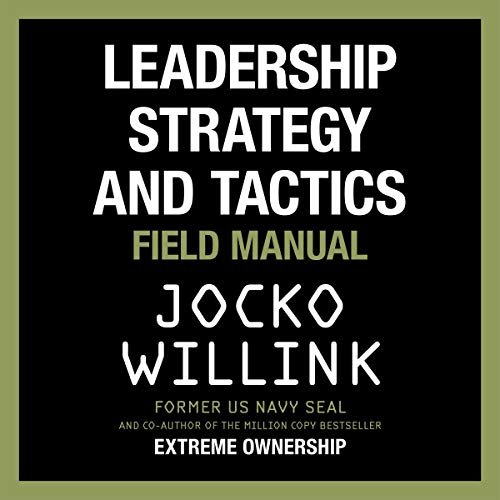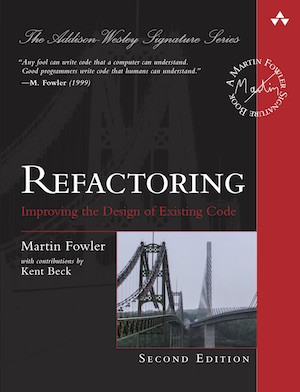My Year in Books (2020)
Books | . Edited . 19 min read (4478 words).
During 2020, I read 74 books. I give some highlights from my year in books here by presenting my top 20 favourites.
The books:
Note that the book covers are used through fair use and will be removed upon request.
The Elements of Statistical Learning
 “The
Elements of Statistical Learning: Data Mining, Inference, and
Prediction”
(Second Edition; 2009) by Trevor Hastie,
Robert Tibshirani, and Jerome Friedman. Available for free in
PDF
from its website. I read the
hardback edition, which I recommend getting.
“The
Elements of Statistical Learning: Data Mining, Inference, and
Prediction”
(Second Edition; 2009) by Trevor Hastie,
Robert Tibshirani, and Jerome Friedman. Available for free in
PDF
from its website. I read the
hardback edition, which I recommend getting.
Reading this particular book was one of my reading goals of the year. It gives a great overview of statistical learning theory, which is an area that provides mathematical theory for how to learn from data using statistics. This is closely related to machine learning, of course, and the overlap is significant (with only slightly different goals and perspectives).
The book covers many different statistical learning topics, such as linear methods for regression and classification, regularization, basis expansion, splines, kernel smoothing methods, model assessment (including cross validation), boosting, ensemble learning, tree-based methods, SVMs, nearest-neighbours, PCA, SOMs, random forests, the EM algorithm, undirected graphical models, and more. It also gives an overview of neural networks, but this is not a focus and modern machine learning techniques such as deep learning are not covered.
Practically, this books is perfect to get the theoretical knowledge and understanding for using scikit-learn effectively and gives enough background to go well beyond that. It also provides good understanding and intuition on how to analyse and assess learning models using statistics. The tradeoff between bias and variance is described eloquently throughout.
Linear Algebra Done Right
 "Linear
Algebra Done Right" (Third Edition; 2015) by
Sheldon Axler.
"Linear
Algebra Done Right" (Third Edition; 2015) by
Sheldon Axler.
It describes itself as a “best-selling textbook for a second course in linear algebra” and I completely agree. It’s well written and perfect for a second encounter with linear algebra. I mostly used it as a refresher and it serves that purpose very well too, but I also learned a few new things (mainly on duality). Its presentation of the topics is engaging and clear. I think it’s a great idea that it presents almost everything without relying on determinants, which are only presented towards the end. Most of the book also covers linear algebra for both real and complex numbers, which is good.
It’s useful to complement this with another linear algebra book which introduces determinants early and relies on it heavily for proofs instead. I believe firmly that it’s helpful to read many different presentations of the same mathematical areas. A perfect way to follow up after this is to read up more on numerical linear algebra.
Needless to say, linear algebra is highly useful within many areas of science and engineering. Nowadays, it’s perhaps increasingly famous for being at the core of machine learning, but it’s also essential for computer graphics and simulations and much more.
Leadership Strategy and Tactics
 "Leadership
Strategy and Tactics: Field
Manual"
(2020) by Jocko Willink.
"Leadership
Strategy and Tactics: Field
Manual"
(2020) by Jocko Willink.
Jocko Willink is a retired U.S. Navy SEAL officer who has already written two previous great books on leadership (co-authored with Leif Babin): “Extreme Ownership: How U.S. Navy SEALs Lead and Win” and “The Dichotomy of Leadership: Balancing the Challenges of Extreme Ownership to Lead and Win”. This is his latest book on the subject that was published this year. I know of no better books on practical leadership than these.
The books can in principle be read in any order, but I still recommend reading them in the order they were published because they build somewhat on knowledge from the previous ones. The later books focus on more subtle aspects of effective leadership. These books are all highly recommended! Read and contemplate and re-read as you grow as a leader or team member. The books are very useful as preparation for leading teams better, but they are interesting and fascinating even if you don’t need to improve your leadership skills.
There’s a TEDx Talk from 2017 by Jocko Willink that gives some highlights of what’s covered at length in his books.
Refactoring
 "Refactoring:
Improving the Design of Existing
Code" (Second Edition; 2018)
by Martin Fowler.
"Refactoring:
Improving the Design of Existing
Code" (Second Edition; 2018)
by Martin Fowler.
Martin Fowler’s Refactoring book has been a classic within software development for a long time and I consider it to be one of the most essential books for learning good software development practices. I don’t even remember when I read the first edition. The updated second edition is just as good.
The book is to some degree tied to object-oriented programming and shows examples in a specific programming language, but the principles it teaches are general and useful far more widely. As explained in the book, refactoring is the activity of improving the structure of existing source code by making small and safe changes and the term is also used to describe one of these changes or “refactorings”.
Today, many statically-typed languages have good tool support for automatic refactorings. IntelliJ for example allows you to select some Java code and click “Extract method” and does the change itself for you. For other languages, such as Python, the tool support is still lacking. In the end, the tools are just a convenience and, whether you use tools for refactoring or not, it’s useful to know some established names for refactorings so that you can discuss them with others and to understand the details of performing each refactoring yourself. It’s also important to understand the role of automated testing in refactoring to be able to manage the associated risks.
The book also presents the related concept of code smells. A code smell is something structural that is potentially problematic, such as a “data clump” of several variables that are being passed around together in many places (this can be simplified by grouping them into an object). Code smells are a great way of finding potential refactorings. By keeping the code smells at a reasonable level, you can avoid building up too much technical debt.
One of the best things about refactoring, when combined with comprehensive automated testing, is that software architecture can be designed more incrementally. Any design decision that you know can be easily changed through refactoring later can be postponed without too much worry. By having good automated test coverage, those future changes shouldn’t cause excessive risk or cost either. This, in my opinion, is the key to modern agile software development and frequent software releases over time.
Mindset
 “Mindset: Changing the Way You Think to Fulfil Your
Potential” (Second
Edition; 2017) by Carol Dweck.
“Mindset: Changing the Way You Think to Fulfil Your
Potential” (Second
Edition; 2017) by Carol Dweck.
Carol Dweck is a Stanford professor in Psychology and a world-renowned expert on the psychology of mindsets, motivation, and development. Her book “Mindset” is an often-cited classic, now in an updated version.
The book’s main idea is that people have (to varying degrees) a “fixed mindset” or a “growth mindset”. People with a fixed mindset believe that their abilities are basically fixed and it therefore becomes important for them to prove to themselves and others that they are innately talented, perhaps even by not preparing or practising since that shouldn’t be necessary for someone with natural talent. This makes individuals with fixed mindsets easily discouraged from practising and improving further, especially when experiencing setbacks.
Individuals who have a growth mindset on the other hand, believe that setbacks and failures are opportunities to learn and are confident that they can improve their skills and knowledge through effort and hard work. In practice, this leads people with a growth mindset to be much more motivated over time to practice and learn more.
In this way, an individual’s mindset becomes a self-fulfilling prophecy. It’s also well known that in reality, we can indeed develop and improve ourselves if we put in the necessary hard work. This is what makes it valuable to develop a growth mindset in ourselves and others. At the same time, it’s unavoidable that we’re all prone at times to slide into a fixed mindset by doubting or disregarding our ability to improve. This book serves as excellent motivation for striving towards a productive mindset that promotes lifelong learning.
There’s a TEDx Talk from 2014 by Carol Dweck on the same ideas.
Drive
“Drive: The Surprising Truth About What Motivates Us” (2009) by Daniel Pink.
This book discusses a related topic to “Mindset” above, but from a different perspective. How do we motivate ourselves and others in general? What motivates people? Decades of scientific research gives us many enlightening answers and this book presents them in an easily accessible way.
The main takeaway is that when performing modern knowledge work that requires imagination and internal drive people are best motivated by “intrinsic motivation”. The alternative, “extrinsic motivation”, works well when doing mundane physical work that doesn’t require much motivation, but is otherwise not as effective. Intrinsic motivation is motivation that comes from within, such as feeling that one’s work is meaningful or challenging. Extrinsic motivation covers all the classic ways to motivate people through external rewards such as money or praise.
Not only is intrinsic motivation a more effective way of motivating people, studies show that extrinsic motivation often has the opposite of the intended effect. By paying people extra or giving people expected praise for achieving something, intrinsic motivation decreases and quality with it. Instead, praises or extra rewards are best given after achievements and not as the main motivator so that it becomes expected. This is to avoid harming intrinsic motivation, which is much more valuable and important.
At the same time, paying employees enough is naturally important for motivation. It’s beyond this that intrinsic motivation becomes more important and a focus on extrinsic motivation actually decreases motivation. Motivating ourselves and others takes a bit more imagination than just paying more or handing out rewards. Instead, give people an opportunity to take on satisfying challenges, grow as individuals, and make a difference. Then, motivation will take off.
Spark
“Spark: The Revolutionary New Science of Exercise and the Brain” (2008) by John Ratey and Eric Hagerman.
This book is similar to “The Real Happy Pill” by Anders Hansen. Both books discuss how important physical exercise is for brain health. Truly fascinating subject and everyone who values their brains should read up and make sure to start exercising if they don’t already. The good news is that moderate amounts of walking already gives many of the benefits.
There’s a TEDx Talk by Anders Hansen (not the author of this book!) on the same topic.
Kinds of Minds
“Kinds of Minds: Towards an Understanding of Consciousness” (1997) by Daniel Dennett.
This was the first book by Daniel Dennett that I read and I thoroughly enjoyed it. The book examines the philosophy of consciousness and minds and how we can think about and investigate other minds than our own. The clarity of reasoning is refreshing.
Among other things, Dennett cautions us not to incorrectly project ourselves onto other kinds of minds, such as that of various animals (or machines). Humans are, after all, prone to anthropomorphize. A good example from the book is vultures who enjoy feasting on a rotting dead elephant. Most humans would find the same activity to be most unpleasant, if nothing else because of the smell. Turns out that some species of vultures can’t even smell, which goes to show that we can draw some conclusions of their concious experience without imagining them to be the same as ourselves.
To me, the big interesting questions here are whether animals are concious, whether machines can become concious, and what (if anything) that means. Dennett raises many interesting questions surrounding this, answering some and replacing others with better questions. One possible mistake, not limited to this topic, is to view conciousness as an all-or-nothing deal and the book shows how that’s likely not productive. This leads, instead, to the question about what kinds of minds exist out there. Curiously, we don’t seem to understand our own conciousness as well as we often assume, while on the other hand we seem to have a good intuition of what conciousness is. Nobody considers a severed human arm to be concious, for example. In the end, the reader is left to decide on the big questions and the journey through Dennett’s skillful questioning and reasoning is most enjoyable and gives plenty of insight.
I recently read another book by Dennett: “Elbow Room: The Varieties of Free Will Worth Wanting”. It’s an equally well-written book about philosophy (this time about free will). In the end, Dennett describes his ideas much better himself, so I recommend reading his books.
There’s a related TED Talk where Daniel Dennett argues that we don’t understand our own conciousness as well as we might believe.
Bargaining with the Devil
“Bargaining with the Devil: When to Negotiate, When to Fight” (2010) by Robert Mnookin.
A different take on negotiations. Should you negotiate when the other party is (rightly) considered unreliable or even evil? It depends, according to the author, who examines many different real scenarios and explains his recommended approach for weighing the most important aspects and deciding.
As an example from the book, the German nazis from WW2 are discussed. They were at times willing to negotiate and even release people who would otherwise be killed in exchange for money, but couldn’t be trusted to honour such agreements. This is one circumstance where negotiating isn’t always the best choice. Related to this, Churchill famously chose not to negotiate and instead enter the war. Judging whether the opposite party will honour a negotiated agreement is one aspect of deciding whether to negotiate or not.
In individual situations, it’s hard to know what choice will turn out the best (even afterwards). The book doesn’t deny this at all and provides an engaging discussion about how one can reason in high-stake situations and why.
Understanding Michael Porter
“Understanding Michael Porter: The Essential Guide to Competition and Strategy” (2011) by Joan Magretta.
Within the area of business administration, Michael Porter is a leading expert on competition and strategy. This book gives a great overview of his ideas, including competitive advantage, the five forces, differentiation, value chains, and market positioning. If you want to understand competition and business strategy, this book is a good choice.
The five forces framework can even be used to reason about strategy outside of traditional competition between companies, as seen in Porter’s book below called “The Politics Industry”.
Michael Porter’s five forces that affect competition for a company are:
- Threat of new entrants to the market
- Threat of substitute products or services
- Bargaining power of customers
- Bargaining power of suppliers
- Rivalry among existing competitors
Harvard Business Review has an article from 1979 by Porter on this, which shows how long these ideas have been around by now and the fact that they remain relevant makes them worth learning about.
Why?
“Why?: Explaining the Holocaust” (2018) by Peter Hayes.
“Why?” is a well-written book that explores the infamous European tragedy of the 20th century that is the Holocaust. It’s important that we remember and learn from humankind’s gravest mistakes such as this so that we can avoid history repeating itself and this book helps us do that.
Luckily, the world is quite different now. At the same time, this year brought us widespread protests in USA against racial discrimination, which is just one indication that the world, unfortunately, still has potential for improvement. When I grew up in Sweden, it would have been unthinkable for me and my friends (from all over the world) to label people based on “race”. These are values that still stay with me. Let’s never forget that humans are above all else human and the terrible consequences that letting ideology divide us can have. This book serves as a reminder of this.
The book treats the potentially delicate subject in a dignified way and does a great job at answering the questions that many have while dispelling popular myths. There are many books and movies on the subject. This book still feels relevant with it’s different and well-researched perspective. Understanding why is possibly the most important aspect for us to learn something valuable from the tragedy.
The Great Stain
“The Great Stain: Witnessing American Slavery” (2018) by Noel Rae.
American slavery is an important topic that I know too little about, mostly because I’m not American. This book gave horrifying insights into what it was really like back in the days. Rather than describing slavery in general, this book instead has collected first-hand accounts from those who experienced it themselves. This gives a trustworthy and direct view of the slavery from multiple points of view.
In a way, I have mixed feelings about exposing ourselves to old values that we would ideally want gone. At the same time, I believe that we need to understand history to understand the present and that exposure to bad values helps us clarify and strengthen our own. The slavery of old is truly shocking. I’m happy to note how much the world of today has improved.
I feel like I should read a more traditional history book about this too. Whether you know your American history or not, I can still recommend this book for a different treatment of the topic.
There’s a YouTube video about the book.
The Politics Industry
“The Politics Industry: How Political Innovation Can Break Partisan Gridlock and Save Our Democracy” (2020) by Katherine M. Gehl and Michael E. Porter.
The title is quite American by saying “our democracy” without mentioning what country, but the rest of this book is absolutely fantastic! Political polarisation in the USA is a highly visible problem even from overseas. The book does a good job at describing some reasons behind the polarisation and partisan gridlock. Understanding why is necessary to figure out how to fix it. The book goes on and suggests easy and non-partisan ways of improving American democracy and lessen these problems.
The originator of the book is Katherine Gehl. The book was then co-written with the famous business strategy expert Michael Porter and the authors make use of his competition framework to analyse American politics as an industry. As they say themselves, the book is about politics but is not political. It doesn’t take sides and doesn’t blame Republicans or Democrats. Instead, it argues that the system in which the parties compete is set up in such a way that it promotes more extreme political agendas rather than what would benefit most Americans.
Some of their suggestions for improving the situation is to restructure voting to avoid the problem of throwing your vote away if you vote for a third option and to establish non-partisan primaries. See their website for more.
The book both gives insights into the political system of the USA and offers optimistic ideas about how things could change for the better. I hope we’ll see some of these good ideas gain a foothold.
Leading at The Edge
“Leading at The Edge: Leadership Lessons from the Extraordinary Saga of Shackleton’s Antarctic Expedition” (2000) by Dennis Perkins.
The book describes Ernest Shackleton’s Imperial Trans-Antarctic Expedition. The expedition fails but the story of how the group sticks together under difficult circumstances after they lose their ship Endurance and against all odds manage to make their way back unharmed is inspiring and truly fascinating.
Whether you’re interested in reading about a real-life adventure or in learning battle-tested leadership advice, the book won’t disappoint. Shackleton had experience from previous expeditions and made good use of his insights. As a reader, you get to learn timeless leadership principles together with clear examples from the expedition. Shackleton understood, among other things, the importance of keeping the group occupied for keeping morale up and deals with resolving conflicts and making tough calls.
Most of us never find ourselves in deadly conditions on the Antarctic without any means of communication with the rest of the world, but extreme situations make every consideration more clear-cut and educational. We can all learn something from this failure that became a success story. The basic takeaway for me is the power of staying positive and continuing forward, one step at a time, when catastrophe strikes. What is lost is lost, but shaping the future is up to us.
The 5 Levels of Leadership
“The 5 Levels of Leadership: Proven Steps to Maximize Your Potential” (2011) by John C. Maxwell.
This is the second time I read this book. In a way, it only contains common sense ideas, but it resonates with me. It provides a roadmap for developing leadership abilities through the author’s “5 levels of leadership” and, in my opinion, this is helpful in gauging your own ability and for figuring out how to improve and what to aim for.
The book points out that you start all over at the bottom in every new leadership role and have to earn your place at a higher level of leadership daily. I think this is a good way of thinking about leadership and team work in general.
The levels are:
- Position: people follow because they have to.
- Permission: people follow because they want to.
- Production: you start seeing big results. People follow you because of the results you achieve together.
- People development: you develop other leaders. People follow you because of what you do for them as individuals.
- Pinnacle: you develop level 4 leaders. It’s rare to reach this level and those who do often influence their entire industry.
The book provides some hints on what you need to add to get to each level, in addition to continuing to live up to all the levels below. There are some clear parallels between this book’s level system and the more general job levelling systems from for example Towers Watson, which also provide some guidance on how to progress in one’s career.
One aspect of the book that I like is its focus on building leaders in organisations. Organisations are better off when everyone improves their leadership skills. Leadership is not something that is useful only for a select few.
I can confidently say that I am no level 5 leader and won’t be for a long time. I don’t think the book is helpful for everyone and it’s not necessarily based on hard facts, but it provides good guidance for those who are inspired by it.
The Tyranny of Experts
“The Tyranny of Experts: Economists, Dictators, and the Forgotten Rights of the Poor” (2014) by William Easterly.
An interesting book on developmental economics, global poverty, and how self-appointed experts are complicit in denying the world’s poor the same rights and freedoms that people in rich countries take for granted. It’s a good book on an important and always relevant topic that provides an interesting view on various countries’ efforts throughout history to help economically poor countries. As is widely known, these efforts too often end up supporting dictators and corruption. The book discusses this more in depth than what I’ve seen elsewhere.
Bean Counters
“Bean Counters: The Triumph of the Accountants and How They Broke Capitalism” (2018) by Richard Brooks.
The topic of the book is the Big Four accounting firms and the history of accounting and how the Big Four came to be. It may sound like dry reading, but it’s far from it. The history of accounting may have started out that way, but increasingly the Big Four are at the core of scandals and crises and are making big money in the process.
I first read about similar critique of the Big Four back in 2018 while I was studying MBA Essentials at LSE, through a Financial Time’s article series: The Big Flaw: Auditing in Crisis (only for subscribers). It’s an interesting and complicated topic. At the heart of the issue is the fact that auditing firms get paid large sums by the very companies they are supposed to audit. This appears to have the predictable result that we would all expect, at least at times.
The book explores both the history of accounting in general (which is fascinating in itself) and argues that the Big Four aren’t serving society the way they were meant to. The book is two years old, but as far as I know, the situation is relatively unchanged.
The Toyota Way
“The Toyota Way: 14 Management Principles from the World’s Greatest Manufacturer” (2003) by Jeffrey K. Liker.
Anyone who has read books about “lean startups” or “agile software development” have run into the lean movement that started with Toyota. It’s only natural to read up on the original. The book presents the Toyota production system and the principles behind it. After 17 years, they remain as relevant as ever.
If you’ve ever struggled to understand “lean” or “agile” principles, this book will help you understand where it comes from and why Toyota developed the basic principles that you’ll still find in many newer books on these topics.
Without Conscience
“Without Conscience: The Disturbing World of the Psychopaths Among Us” (1993) by Robert D. Hare.
A fascinating introduction to the world of psychopaths. The author has studied psychopaths at American prisons, but their prevalence makes it likely for us all to encounter several in our lifetime. When you do, I believe it helps to be aware of the possibility. As the author points out, he still gets tricked by manipulative psychopaths and it’s hard to identify them (something us amateurs of course should leave to the professionals). All the same, it’s useful (without becoming cynical) to know that there are individuals out there who can lie to your face without the slightest fear of getting caught and who lack the conscience that the rest of us take for granted.
It’s easy to assume that all individuals play by the same rules. Psychopaths clearly play by their own rules and this book gives some insight into that. The book is also careful to point out that not all criminals or unpleasant individuals are psychopaths. In the end, the best advice is to stay away from people like this (regardless of their exact problem).
Humankind
“Humankind: A Hopeful History” (2019) by Rutger Bregman.
After reading many gloomy books, a positive and optimistic one like this is delightful. The basic premise of the book is that humankind is basically good, despite the popular belief of the opposite. I can’t agree more. Read it and fill your mind with some hopeful inspiration.
The book reminds me of other good books such as Factfulness by Hans Rosling, Enlightenment Now by Steven Pinker, and to some degree Sapiens by Yuval Noah Harari.


